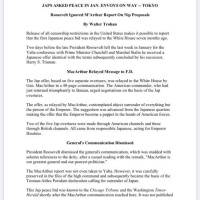
A group of scientists have detected the equivalent of what we refer to as Hawking radiation – particles created from disruptions in the quantum fluctuations induced by the black hole's rupture in spacetime – using a chain of single-file atoms to imitate the event horizon of a black hole.
The general theory of relativity, which describes the behavior of gravity as a continuous field known as spacetime, and quantum mechanics, which describes the behavior of discrete particles using the mathematics of probability, could help resolve the tension between these two frameworks for describing the universe, they claim.
These two immiscible theories need to discover a method to coexist in order to have a unified theory of quantum gravity that can be used everywhere.
Black holes—possibly the strangest, most extreme things in the Universe—come into play in this scenario. Within a certain radius of the black hole's center of mass, these enormous objects are so immensely dense that no velocity in the universe is fast enough to allow escape. anything except light speed.
The event horizon refers to the distance, which varies based on the black hole's mass. Since nothing returns with crucial information about an object's destiny after it has crossed its border, we can only speculate as to what occurs. However, Stephen Hawking postulated in 1974 that the event horizon's disruption of quantum fluctuations results in a kind of radiation very similar to thermal radiation.
Even if it does, it is now too weak for us to detect. We may never be able to separate it from the hissing static of the universe. But by making black hole replicas in a lab, we can examine its characteristics.
Despite the fact that this has been done previously, a team lead by Lotte Mertens from the University of Amsterdam in the Netherlands has created something brand-new.
Electrons 'hopped' from one location to another along a one-dimensional chain of atoms. The scientists were able to make some qualities disappear by adjusting how easily this hopping could take place. This resulted in the formation of an event horizon that interfered with the electrons' ability to behave like waves.
Only when a portion of the chain stretched beyond the event horizon did the impact of this fictitious event horizon result in a temperature increase that matched theoretical predictions of an analogous black hole system, the scientists said.
This might imply that Hawking radiation is produced as a result of the entanglement of particles that cross the event horizon.
Under simulations that started by simulating a type of spacetime regarded as being "flat," the Hawking radiation was only thermal for a specific range of hop amplitudes. This shows that under some conditions and when there is a shift in the space-time warp caused by gravity, Hawking radiation may only be thermal.
これは、事象の地平面を横切る粒子のもつれによって、ホーキング放射が発生することを示唆しているのかもしれない。
また、「平坦」とみなされる時空のシミュレーションを行ったところ、ホーキング放射は特定のホップ振幅の範囲でのみ熱的に観測されました。このことは、重力による時空のゆがみがある場合、ホーキング放射は熱的なものでしかない可能性があることを示しています。

























